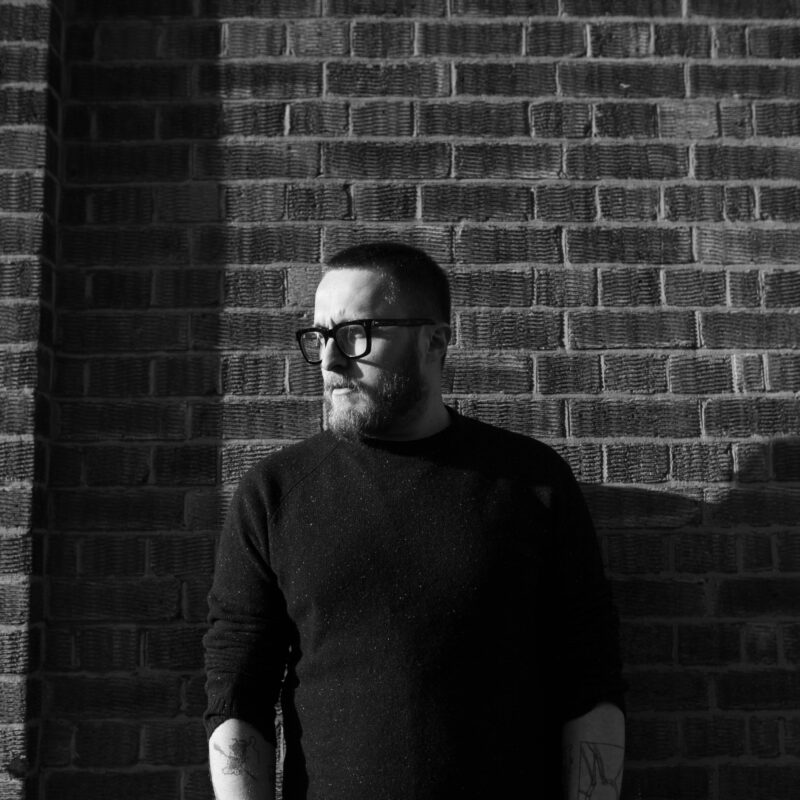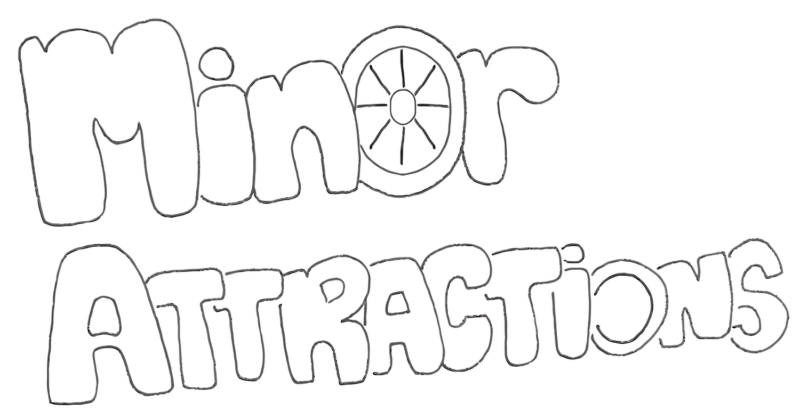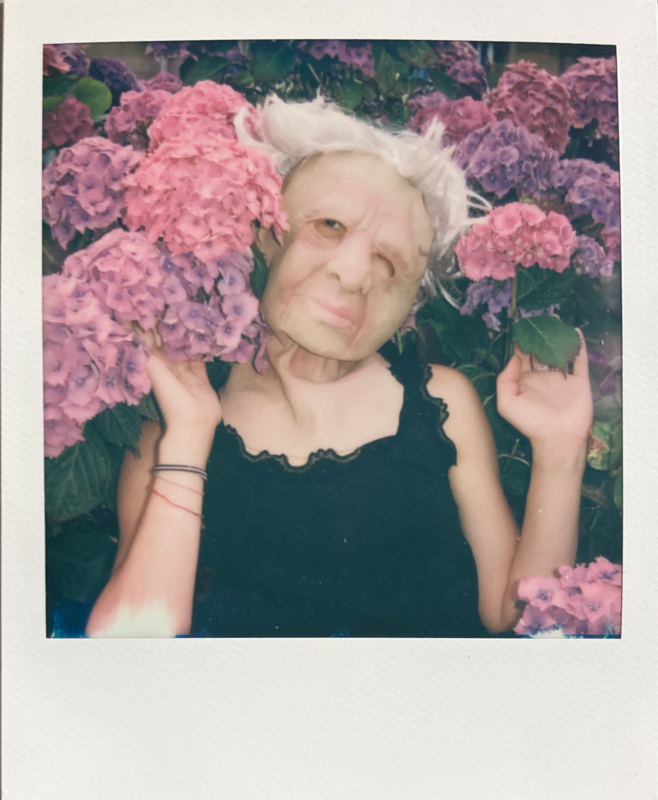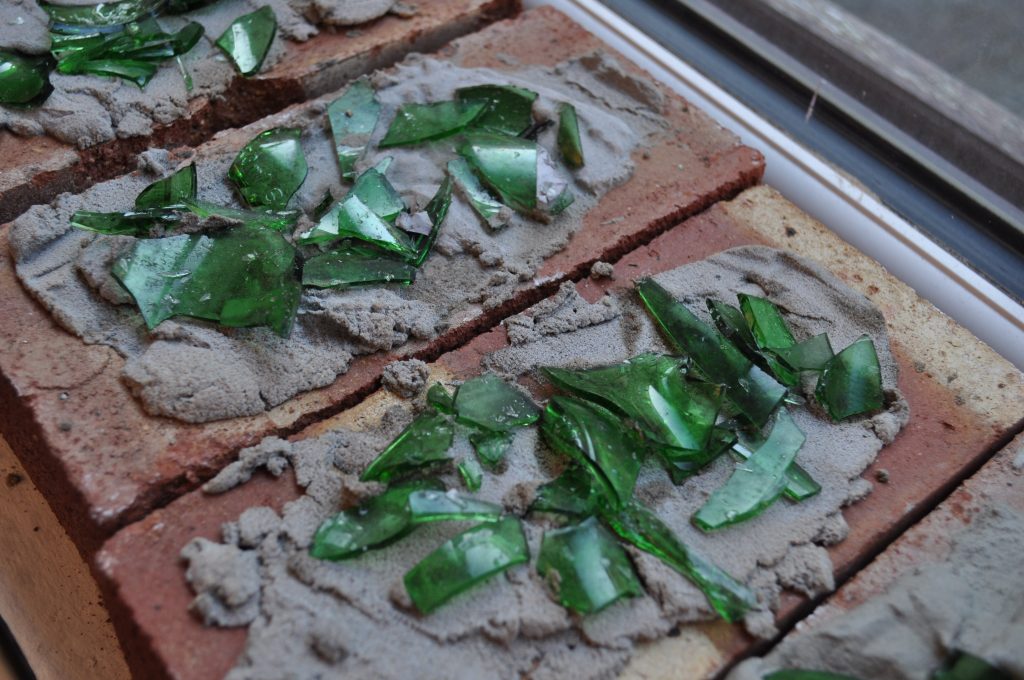
Allan Gardner, Bricks, 2020, Housebricks, premix concrete and broken beer bottles.
Scottish born, Leeds based artist Allan Gardner recently sat down with art historian, writer and curator Hector Campbell to discuss his approach to collaboration, his background in the DIY punk subculture, recent experimentation with video art and his inclusion in the upcoming group exhibition A Land of Incomparable Beauty at Collective Ending HQ in London, which opens July 11th and runs until August 22nd.
Hector Campbell: Your most recent exhibition, Tulpa at Bloc Projects in Sheffield, was a collaborative exhibition with Sean Patrick Campbell that aimed to investigate how fear is used in contemporary society as a means to implement power and control. Could you talk more to that conceptual idea, and the physical works that came about as a result?
Allan Gardner: Sean and I had worked together before on an exhibition for the Glasgow School of Art, Open Envelope, influenced by the idea that information is sought from an image rather than communicated by the image.
Tulpa refers to the idea of something manifested through a belief in it, in this case, an idea given power or authority through its consistent repetition. The works were mainly made separately, with the exception of the earth mounds and photographs. In the collaborative research and the works produced, we both tried to look at the inherent confusion of contemporary reality, the duplicity of symbols and the issue of turning an individual into one. I was interested in the way that images or ideas are given power in reality through the context in which they’re represented – the lore that goes into manifesting an idea as a presence in reality, often inspired by misunderstandings (wilful, ignorant or otherwise). The idea of talking out of both sides of one’s mouth.
I showed two works from my series New American Folk Hero, both presenting controversial people from contemporary US history who have become figureheads in anti-establishment thought, particularly the kind that manifests online. The reality of what actually happened in those stories has become confused, lost in the mire of pop culture. Both men are, by definition, domestic terrorists, but their identity has disappeared, they are emancipated – maybe even forgotten – replaced with a story.
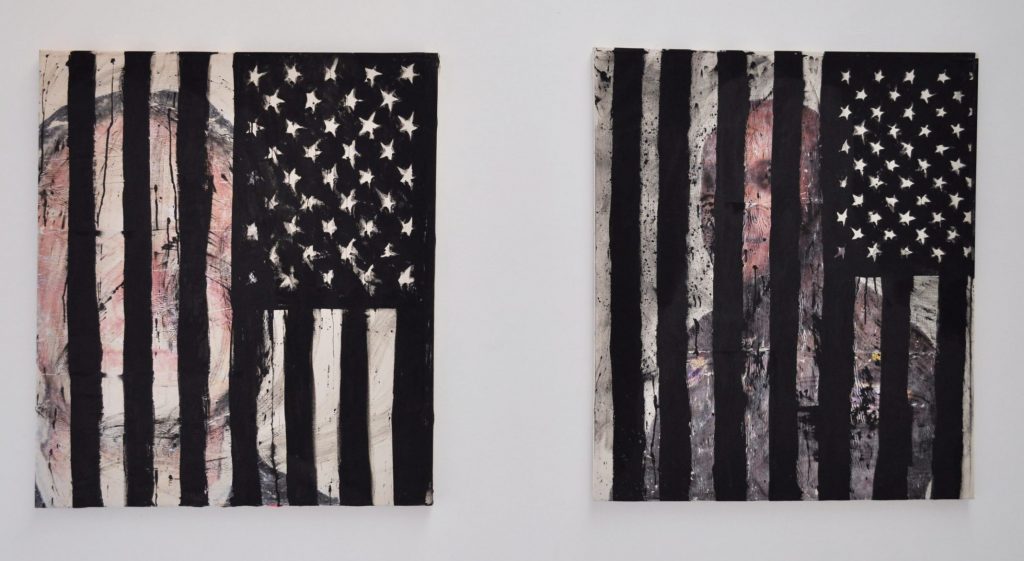
Allan Gardner, New American Folk Hero (Dorner), 2020, Ink, acrylic and transfer gel on canvas & New American Folk Hero (Heemeyer), 2020, Ink, acrylic and transfer gel on canvas.
H.C: As was the case with ‘Tulpa’, you often work with collaborators such as Campbell, Tomas Harker and Dasha Loyko to produce artworks and exhibitions. How important are collaboration and artistic exchange to you, and how do these collaborations influence your own practice?
A.G: Both are super important. In the cases you mentioned, those people are all friends first and foremost and part of why we collaborate, I suppose, is because our work intersects at points that we find difficult to reach by ourselves. Another reason to collaborate is to share skills, experience and perspectives that one may otherwise lack.
In the case of working with Dasha, we produced a piece shown as part of a book/series of exhibitions at Gossamer Fog and SCIENCE Museum. Something that I really enjoyed about this collaboration was the opportunity to turn personal relationships into an aesthetic. I kind of worked more as a producer/editor than anything else. Normally, I’m very close to the work that I make but here I got to live vicariously through Dasha. It’s a subtle work but one that was quite voyeuristic – the text was already duplicitous, she was already tricking her audience. It was a fun experience trying to pick out what I could from it, inserting myself into the context of the story. That work felt like reading a book you really like and then trying to explain the story to someone, emphasising your favourite parts.
H.C: Within your artwork, we can see the repeated use of black and red, colours commonly associated with anger, aggression, darkness and death. What draws you back again and again to that colour palette?
A.G: Using black and red came out of the aesthetic influence that anarchism has had on my own visual identity. I spent a decent amount of time in squats growing up, most of which described themselves as autonomous spaces and were deeply entrenched in antifascism. I was always infatuated with the visual language of the walls – the graffiti and the posters exhibiting atrocity and stark phrases stuck out as threats against the hate of the right-wing and oppressive governments.
They’re both austere colours, more so than aggressive they’re uncompromising. Red, to my mind, doesn’t mean attack as much as it means STOP. We’re used to seeing red communicating that we need to cease activity, which is exactly what you want someone to do in front of a painting.
I remember reading those trashy How to Sell Art style article and they always suggested that blue paintings sold more due to their calming presence in a room. My palette was maybe a little fuck you to that kind of thinking, or those kinds of artists – not that I pay them any mind. I remember one of those contemporary art Instagram pages posted my painting and the comments were all “UGH NO” and “NEGATIVE NEGATIVE NEGATIVE!” and “NO THANK YOU!”, I though that was really funny. I think a lot of my work is funny, rather than necessarily negative – it’s important to poke fun at the darker things in life sometimes.
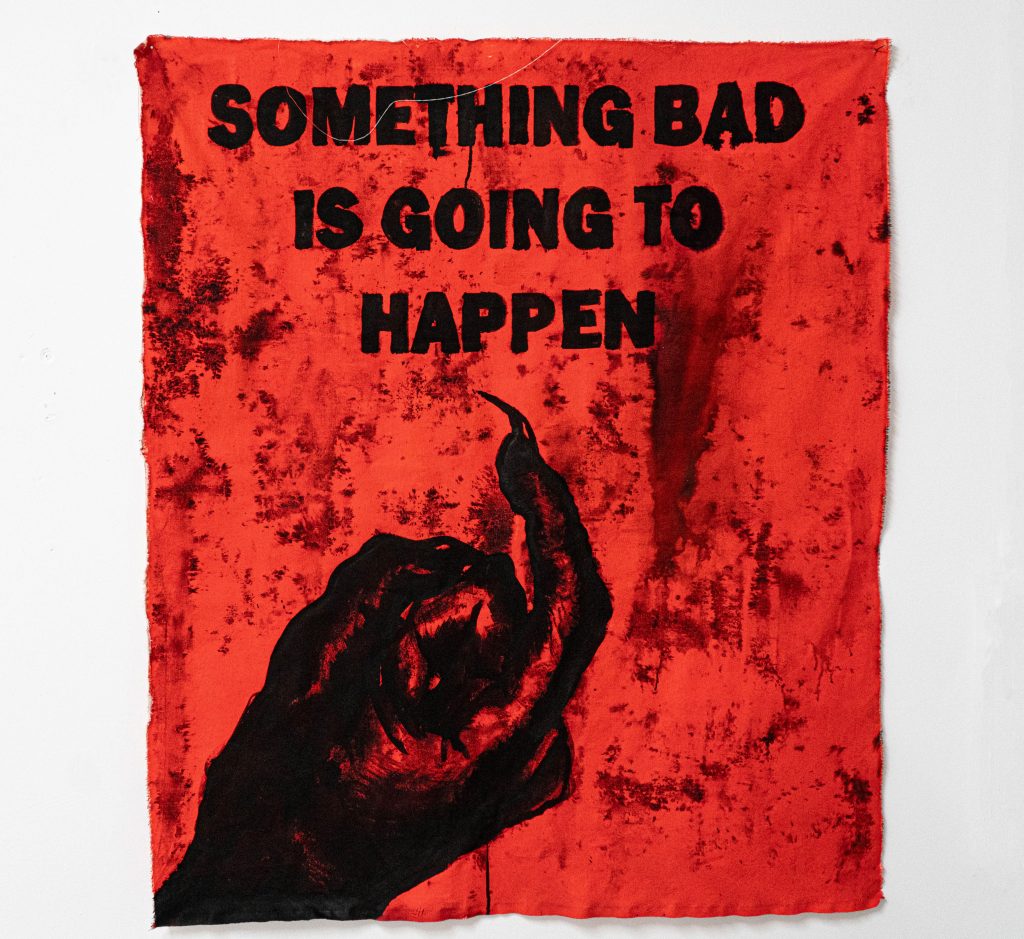
Allan Gardner, SOMETHING BAD, 2019, Ink on canvas. On display at Collective Ending HQ as part of A Land of Incomparable Beauty.
H.C: Your employment of photography, photo collage and visual source imagery serves to anchor your work in reality – to signal to the viewer that these are works of non-fiction, of fact. Has photography always played a role within your creative output? And where do you find the visual source imagery that you incorporate into your artworks?
A.G: That statement about signalling that these are works of fact is astute, that is the exact purpose. The conversations happening in the work tend to be between real situations as they transpire and our processing of them on a psychological, philosophical or emotional level.
Photographs are undeniable, but we’ve come to understand the trick of context, how it’s integral to understanding the reality of the image. I am a terrible photographer however, I have to steal the photos for my work. Including photographs through image transfer is duplicitous, it’s an emancipation. A lot of my thinking around this was inspired by Ranciere’s The Emancipated Spectator I, the idea being that as the spectator’s inference is tethered to their experience, so is the photo’s implication tethered to it’s context.
In some works, I’ve included images from early articles about the Church of Satan. People like Anton LaVey were seeking capital through dissonance, seeking power through playing on dominant societal fears. The war between the religious right and the decentralized idea of evil is an interesting one and allegorical to the way that political enterprises utilise social media and internet culture. Photos used to be the truth and now they’re not.
I also use images from religious ceremonies, particularly esoteric ceremonies and exorcisms. Recently I’ve been interested in fringe YouTube channels and forums populated by MAGA-bikini hawking psychos or cops and soldiers who post photos of their girlfriends wearing military gear. The world is weird and gross, but we have the opportunity to explore it from the safety of our living room.
H.C: Textual references also feature heavily within your practice, often acting as slogans or tag lines that accompany and compliment your visual depictions. How do you approach the combination of both verbal and visual source material? Are you looking to elicit comparisons to advertising and public service announcements?
A.G: I initially thought you meant “illicit” which is funny, regarding the context. The addition of text to a work is interesting as it can either clarify or obscure meaning (for lack of a better word). A lot of the time, I’m looking at text as a way to trip people up. Words are funny things in that they’re prescribed a meaning that becomes almost invalid once they relate to memory or experience – their definitions are malleable in a way that we rarely recognise.
The relationship to advertising is one that’s often brought up, despite the texts being vague, declarative statements as opposed to direct advocacies for a product or ideology. I do like the language of advertising because it completely supplants truth in favour of possibility; our societal relationship to truth right now is complex (and also dumb) so exploring the nuance of it is rewarding.
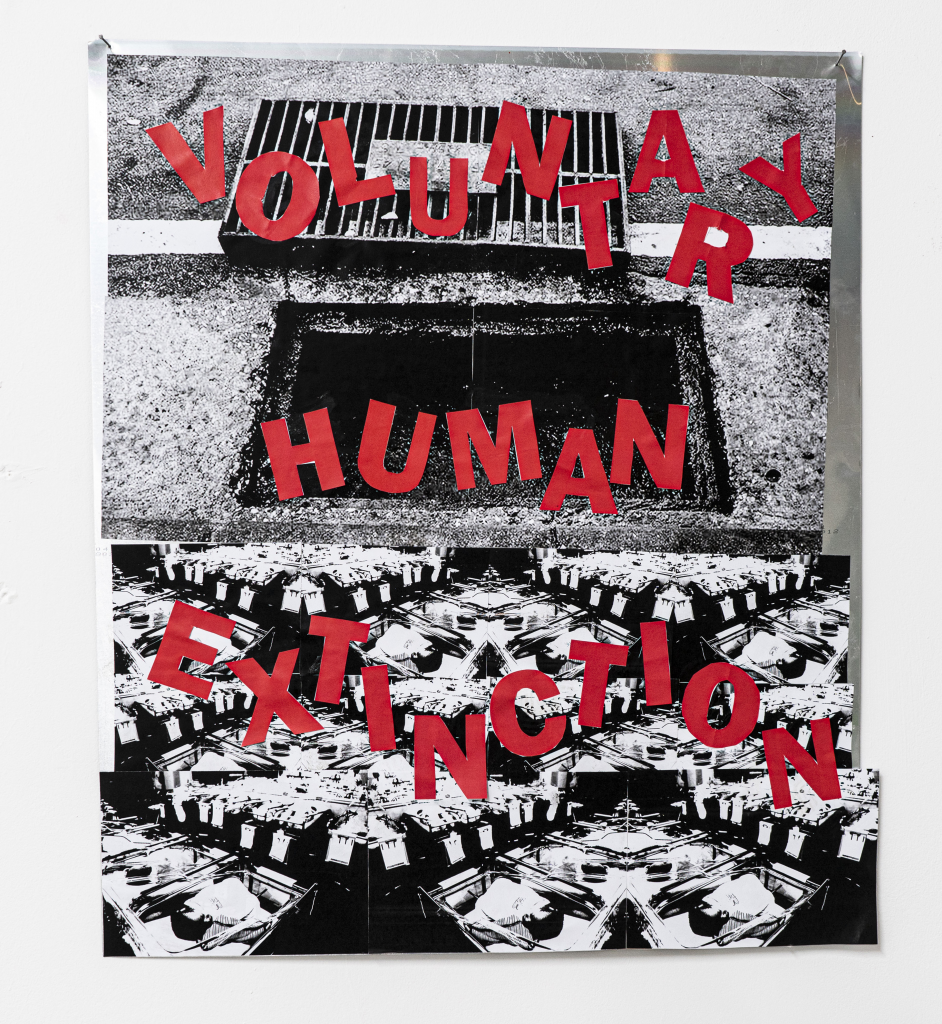
Allan Gardner, DRAIN, 2019, Collage on aluminium.
H.C: Your frequent usage of unprimed or unstretched canvas, your construction of found object sculpture and your sometimes rudimentary means of display all help to evoke a DIY, punk aesthetic, whilst simultaneously leaving evident your hand in the finished works. What influence do DIY subcultures and their ethos/ethics have on your own artistic output?
A.G: I grew up in DIY and punk culture, before I even knew what contemporary art was. Being involved in those scenes goes hand-in-hand with being broke, with no access to resources and having to beg, borrow and steal to make stuff happen. It’s a vehemently outsider culture, which is the main thing that attracted me to it in the first place.
The ideological influence that punk has had on my work is that desire to make things happen. If I can’t afford it, there is always a way to figure it out, and if I don’t have the right materials, I can always use something else. I’ve always been put off by artists who require super specific circumstances in order to work. It’s important for me to be able to make something good out of whatever’s in front of me – bricks and mortar, paint and canvas, photoshop, whatever. Expressing yourself through whatever means are available. As long as there is more cool shit in the world at the end of the day than at the beginning, we’re doing okay.
H.C: Your recent video artwork, Infowars Made Me Hardcore, produced in collaboration with Michael Sangster, was produced during the Covid19 pandemic lockdown and shown online with Annka Kultys Gallery for their ‘Stat at home’ online presentation and ‘[The art happens here]’ platform, and as part of the Institute of Contemporary Arts daily lockdown newsletter. How did you adapt to producing work during the lockdown? And how does Infowars Made Me Hardcore speak to your experience of recent global events?
A.G: As I said earlier, being adaptable is important to me. I don’t like to complain about the circumstances under which my work is made and try to produce the best stuff that I can with whatever tools are available. Over lockdown, I’ve been making some videos that I called AV Collages, basically the practice of deconstructing a painting I’d make and reproducing it as a video.
I made IWMMHC (a Mark Leckey reference, I hope he doesn’t mind the nod) at the start of the lockdown, maybe a couple of weeks in, and got Michael to produce the audio after the video was finished. The work features a cutaway to a cop running with his gun and firing blindly after an altercation with a civilian, but it was made prior to George Floyd’s murder and the continuing protests organised by BLM and associated groups.
The piece is supposed to speak to our desire for outrage, the seemingly endless appetite for hysteria in the media. It’s about the death of truth and the part of us – or maybe rather me – that is experiencing the world in a sort of sardonic nihilism.
I have hope and a desire for a better world, I’m willing and able to be part of what needs to be done for that to happen. At the same time, I can’t help but feel hopeless sometimes, and that feeling of hopelessness is exacerbated by the vitriol we see from the ill-informed and ignorant both online and IRL. Normal people radicalised by the right, unapologetic bias in the news, politicians’ lack of accountability, it’s enough to make anyone feel hopeless – sometimes all you can do is laugh.
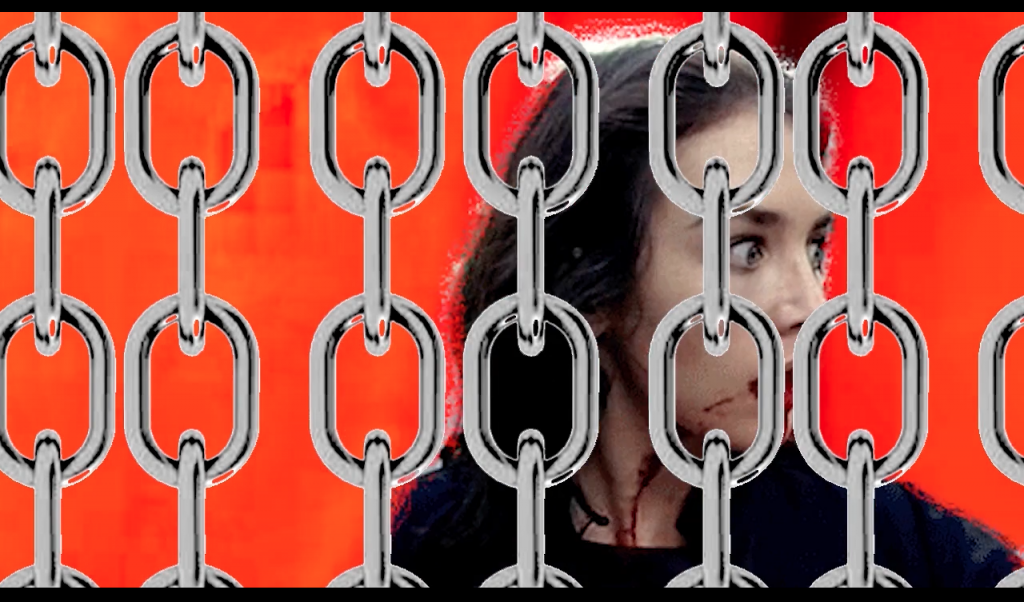
Allan Gardner, INFOWARS MADE ME HARDCORE, 2020, Film still.
H.C: Finally, your work will be on display in the upcoming group exhibition A Land of Incomparable Beauty, presented at Collective Ending HQ, which aims to expose the sinister underbelly of Britain’s idyllic countryside. Could you discuss the artworks you will be exhibiting, and how these artworks relate to the exhibitions wider themes?
A.G: I had the opportunity to visit the new CE HQ just before lockdown and it looks amazing, I couldn’t be more excited to be showing there, alongside some great artists. I’m exhibiting two works, a painting from last year titled SOMETHING BAD and a sculpture, Despair of Parents in Market Town.
I’m from Scotland and don’t consider myself British, so when I think about the ‘British Countryside’, I don’t really have any relationship towards it. Weirdly enough, what influenced the sculpture I’m showing is the relationship between the 80s Satanic Panic in the USA and what the media describes as “County Lines Drugs Operations”. Whenever I hear a phrase like that, I picture a Mum in Surrey wringing her hands and talking in hushed tones about what’s to be done with all those kids in tracksuits outside the shop. For me, this sort of attitude speaks to a hyper-conservative refusal to address the realities of late capitalism, something that those same people who fear the city’s encroaching tendrils chose to rampantly accelerate in their youth.
I remember shopping with my Mum as a pre-teen and seeing this t-shirt that just said ‘SMOKE CRACK AND WORSHIP SATAN’, I thought that was the coolest thing ever because of how blown out and ridiculous it was. I still think that’s a funny shirt, but for a different reason. It’s a dumb allegory for the difference between advocacy and representation. A statement can be many things other than an advocacy, so it’s probably not a great idea to automatically assume that it is one. I’m enamoured with the fear that youth culture instils in the ageing conservative, so consider the works a nod to your Daily Mail toting shitebag aunt or uncle.
Collective Ending presents A Land of Incomparable Beauty, 11 July – 22 August 2020, Collective Ending HQ Collective Ending HQ. Artists: Hadas Auerbach, Matthew Clifton, BLOAT Collective, Frances Drayson, Allan Gardner, Jonathan Kelly, Hannah Lees, James Lincoln, Luisa Mè, Irvin Pascal, Jesse Pollock, Beth Emily Richards, Giorgio Sadotti. Organised by Charlie Mills, Alia Hamaoui & Byzantia Harlow.

